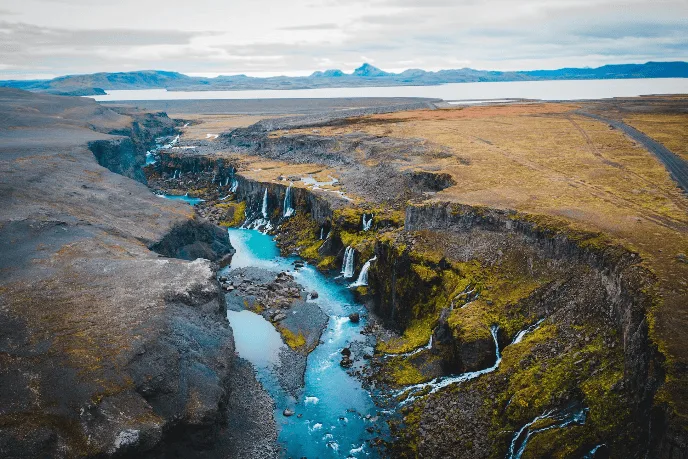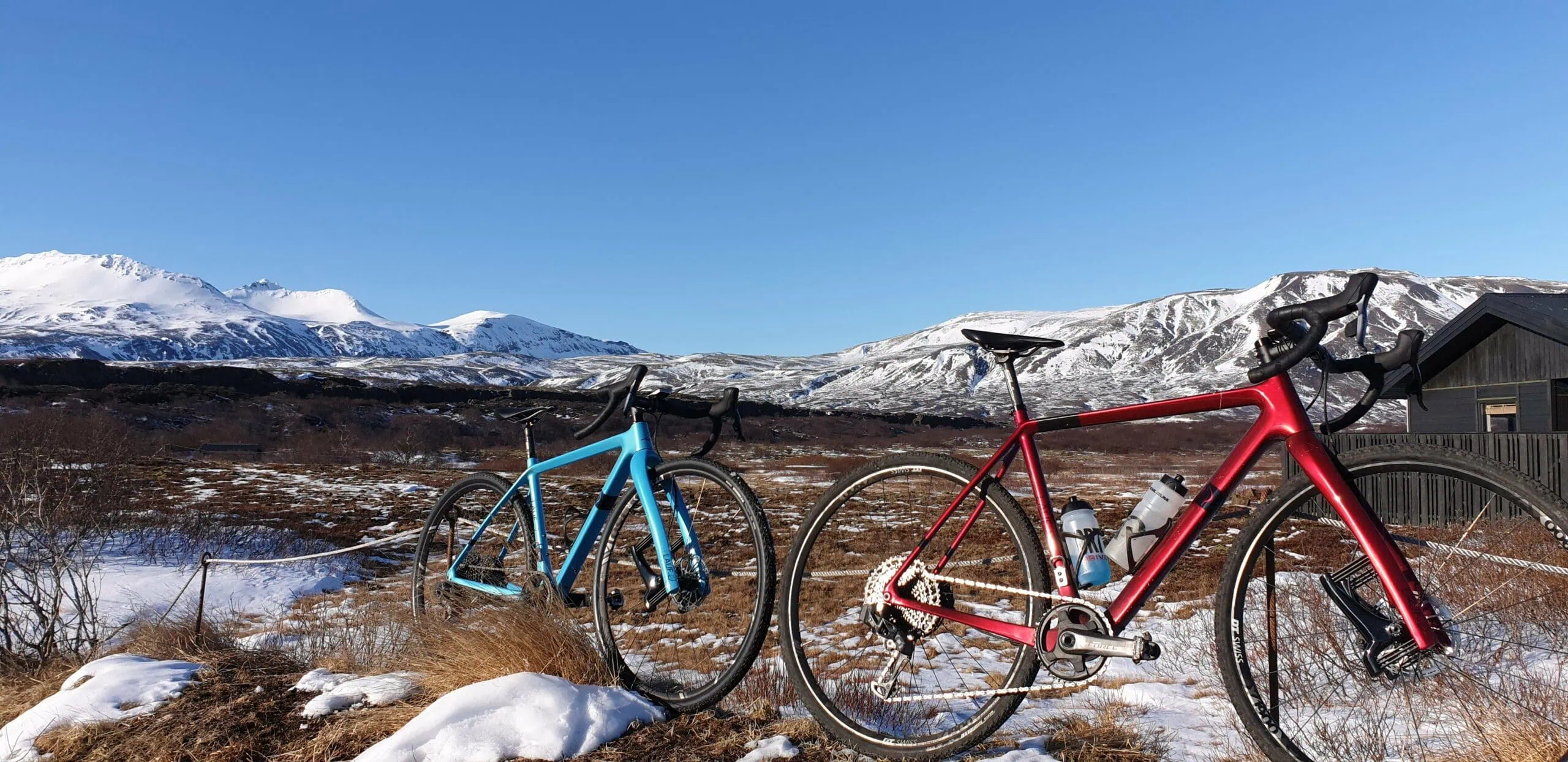


Explore Iceland by bike and experience the freedom of riding through one of the most remote and awe-inspiring places on earth. Glaciers, volcanic plains and peaceful coastal roads set the scene for an unforgettable cycling journey. Our tours are fully supported and carefully designed to balance challenge with comfort.
You’ll ride quiet routes, stay in handpicked accommodation, and enjoy long days in the saddle during Iceland’s summer season (from late May to early September) when conditions are at their best.



The mighty Langjökull (the Long Glacier) is the second largest glacier in Iceland. It’s 50 km long and 20 km wide, with ice 580 m deep at it’s thickest. At it’s highest point the Langjökull reaches an alititude of 1,450 meters. It’s located in the Highlands, and two main highland tracks, connecting the north and the south of Iceland, lie alongside it. Near the highest peaks of Langjökull exists a man-made ice tunnel, a true spectacle for any visitor passing by the glacier.

Snæfellsjökull is one of Iceland’s 32 active volcanic systems and last erupted about 1,800 years ago. On the top of Snæfellsjökull is a small icecap. Throughout history, the beauty of Snæfellsjökull has affected people spiritually, and it has been an inspiration for novelists, painters, and other artists. The best-known artwork is Jule Verne’s sci-fi novel, The Journey to the Center of the Earth, which he wrote under the volcano’s influence.

Reykjavík is the natural starting point for any visit to Iceland, and not undeservedly so. The capital is world-renowned for its culture, history, and natural beauty on all fronts.

The Þingvellir area is praised as the national shrine of Iceland due to its great historical and geological significance. Iceland’s first national park was established there in 1928, and the Þingvellir area has now been recognized for its outstanding universal value and listed as a UNESCO world heritage site.

The big players on the European cycling scene always top the list for the best European country for cycling: France, Italy, Spain. There’s no doubt...







